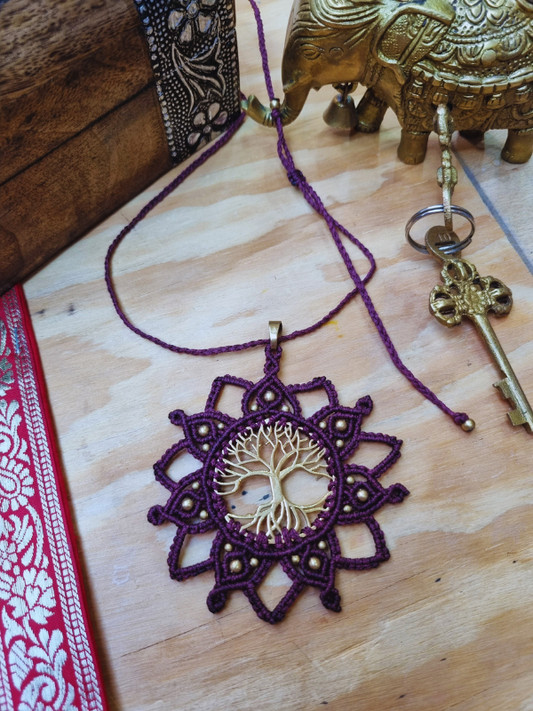Buddha statues are more than just representations of a historical figure—they are symbols that carry deep spiritual significance. These sculptures are designed to embody the teachings, virtues, and characteristics of the Buddha, the enlightened being who founded Buddhism. Each type of Buddha statue has its own distinct meaning, often related to different aspects of his life, teachings, or the path to enlightenment. Understanding the different types of Buddha statues and their meanings offers a deeper appreciation of Buddhist art and spiritual practice. This blog explores some of the most common Buddha statues, their physical features, and the symbolic messages they convey.
1. The Seated Buddha (Meditating Buddha)
The most widely recognized Buddha statue is the seated Buddha in a meditation posture, also known as the "Dhyanasana." In this posture, the Buddha sits cross-legged with his hands placed on his lap in a mudra (gesture) called "Dhyana Mudra," representing concentration and meditation.
Meaning: The seated Buddha symbolizes the achievement of inner peace, self-realization, and enlightenment. It is a representation of the Buddha's deep meditation under the Bodhi tree, where he attained Nirvana (enlightenment). The crossed-legged position indicates the path of meditation, while the Dhyana Mudra signifies the Buddha’s ability to remain centered and focused, regardless of external distractions.
2. The Standing Buddha
In contrast to the seated Buddha, the standing Buddha is portrayed in an upright position with one hand raised in a gesture of blessing or teaching, and the other hand typically resting at the side or holding an object such as a lotus flower.
Meaning: The standing Buddha represents the Buddha's active engagement in the world. The raised hand, known as the "Varada Mudra," represents compassion and the giving of blessings to all beings. This gesture often conveys a message of wisdom, guidance, and benevolence. Standing Buddha statues also embody the Buddha's role as a teacher, spreading the Dharma (the Buddhist teachings) and guiding others toward enlightenment.
3. The Reclining Buddha
The Reclining Buddha statue depicts the Buddha lying down on his side, often with his right hand supporting his head. This pose represents the Buddha’s final moments before entering Parinirvana—the complete and final passing away after death—at the age of 80.
Meaning: The Reclining Buddha is a reminder of the impermanence of life and the inevitability of death. It symbolizes the Buddha’s peaceful acceptance of death and the realization of his ultimate liberation from the cycle of birth and rebirth. It is an important representation of the Buddha’s last teachings, urging followers to recognize the transient nature of life and to strive for enlightenment.
4. The Walking Buddha
The Walking Buddha is often depicted with the Buddha in mid-stride, symbolizing his journey towards enlightenment and his compassionate presence in the world. This statue is especially common in Southeast Asia, particularly in Thailand and Burma.
Meaning: The Walking Buddha represents the Buddha’s active role in teaching and spreading the Dharma. It symbolizes progress, forward movement, and the path of enlightenment. The relaxed, graceful stride signifies that one must walk the path with purpose and mindfulness, moving steadily towards spiritual awakening. It also reminds followers of the importance of living a compassionate life, walking with kindness and wisdom in every step.
5. The Buddha with a Lotus Flower
The Buddha with a lotus flower is often shown holding or surrounded by a lotus, which is a symbol of purity in Buddhism. The lotus grows in muddy waters, but its beautiful blossom remains unsullied, symbolizing the potential for enlightenment despite the suffering and imperfections in the world.
Meaning: The lotus represents the purity of the Buddha’s mind and heart, as well as the potential for all beings to rise above the difficulties and suffering of life and attain enlightenment. When the Buddha is depicted holding a lotus, it signifies the purity of his teachings and the promise of spiritual growth despite worldly challenges. The lotus also symbolizes rebirth, as the flower blooms anew each day.
6. The Laughing Buddha (Budai or Hotei)
The Laughing Buddha, also known as Budai in Chinese culture or Hotei in Japan, is a symbol of joy, contentment, and abundance. Unlike the traditional representations of the Buddha, the Laughing Buddha is often shown as a plump, smiling figure with a large belly, holding a sack filled with treasures.
Meaning: The Laughing Buddha is not the historical Buddha (Siddhartha Gautama), but a folkloric figure who embodies the spirit of happiness, generosity, and good fortune. His image represents the joy of life and the importance of laughter, reminding us to approach life with a positive attitude and open-hearted generosity. The Laughing Buddha is a popular figure for those seeking happiness, wealth, and well-being.
7. The Amitabha Buddha
The Amitabha Buddha is a celestial Buddha associated with the Pure Land sect of Buddhism. Depicted seated with both hands held in the Dhyana Mudra or often with a gesture of "compassionate giving," the Amitabha Buddha is a symbol of boundless compassion and wisdom.
Meaning: Amitabha represents the aspiration to attain Buddhahood through devotion and the practice of mindfulness. According to Pure Land Buddhism, calling upon the name of Amitabha Buddha can help practitioners be reborn in the Pure Land, a place free from suffering, where one can work towards enlightenment. The image of Amitabha often offers solace and guidance to those seeking refuge and peace.
8. The Medicine Buddha (Bhaisajyaguru)
The Medicine Buddha is depicted as holding a healing bowl, often with a blue color that represents his connection to healing and health. This figure is revered in Buddhist traditions, particularly in Tibetan Buddhism, for his ability to heal both physical and spiritual ailments.
Meaning: The Medicine Buddha is a symbol of healing and compassion, offering the promise of alleviating suffering. His practice involves using the Buddha’s teachings to heal oneself and others from physical pain, mental distress, and spiritual ignorance. The Medicine Buddha also represents the Buddhist teachings on the importance of cultivating a healthy body and mind in the pursuit of enlightenment.
9. The Maitreya Buddha (Future Buddha)
The Maitreya Buddha is a symbol of the future Buddha who is believed to be coming to earth to renew the teachings of the Buddha once the Dharma has been lost. Maitreya is often depicted seated with a peaceful expression, symbolizing a future era of peace and prosperity.
Meaning: Maitreya is a symbol of hope and renewal, reminding followers that the teachings of Buddhism are timeless and will continue to guide humanity even in future generations. His image represents the future promise of a world where suffering is diminished, and wisdom and compassion prevail. The Maitreya Buddha encourages patience and the belief that the cycle of suffering will eventually come to an end.
10. The Jataka Buddha
Jataka Buddha statues depict scenes from the Buddha’s past lives, where he practiced virtues such as generosity, patience, and compassion. These statues typically illustrate the moral stories of the Buddha’s previous incarnations, which are taught in the Jataka tales.
Meaning: The Jataka Buddha statues serve as reminders of the Buddha’s journey toward enlightenment. They represent the moral lessons and virtues cultivated by the Buddha in his past lives. These statues inspire practitioners to learn from the Buddha’s example and embody the same qualities in their own lives.
Conclusion
Each Buddha statue is much more than an artistic representation; it is a reflection of deep philosophical concepts and teachings that have been passed down through centuries. From the meditative serenity of the Seated Buddha to the joyful and abundant Laughing Buddha, each statue carries with it a lesson that transcends time and place. Understanding these meanings allows individuals to connect more deeply with the Buddha’s teachings and apply them to their lives, fostering compassion, wisdom, and peace.
Whether displayed in temples, homes, or meditation spaces, Buddha statues serve as both spiritual guides and objects of reverence, offering an ongoing reminder of the path toward enlightenment. As you explore the different types of Buddha statues and their meanings, you’ll discover a deeper connection to the profound wisdom they embody.




